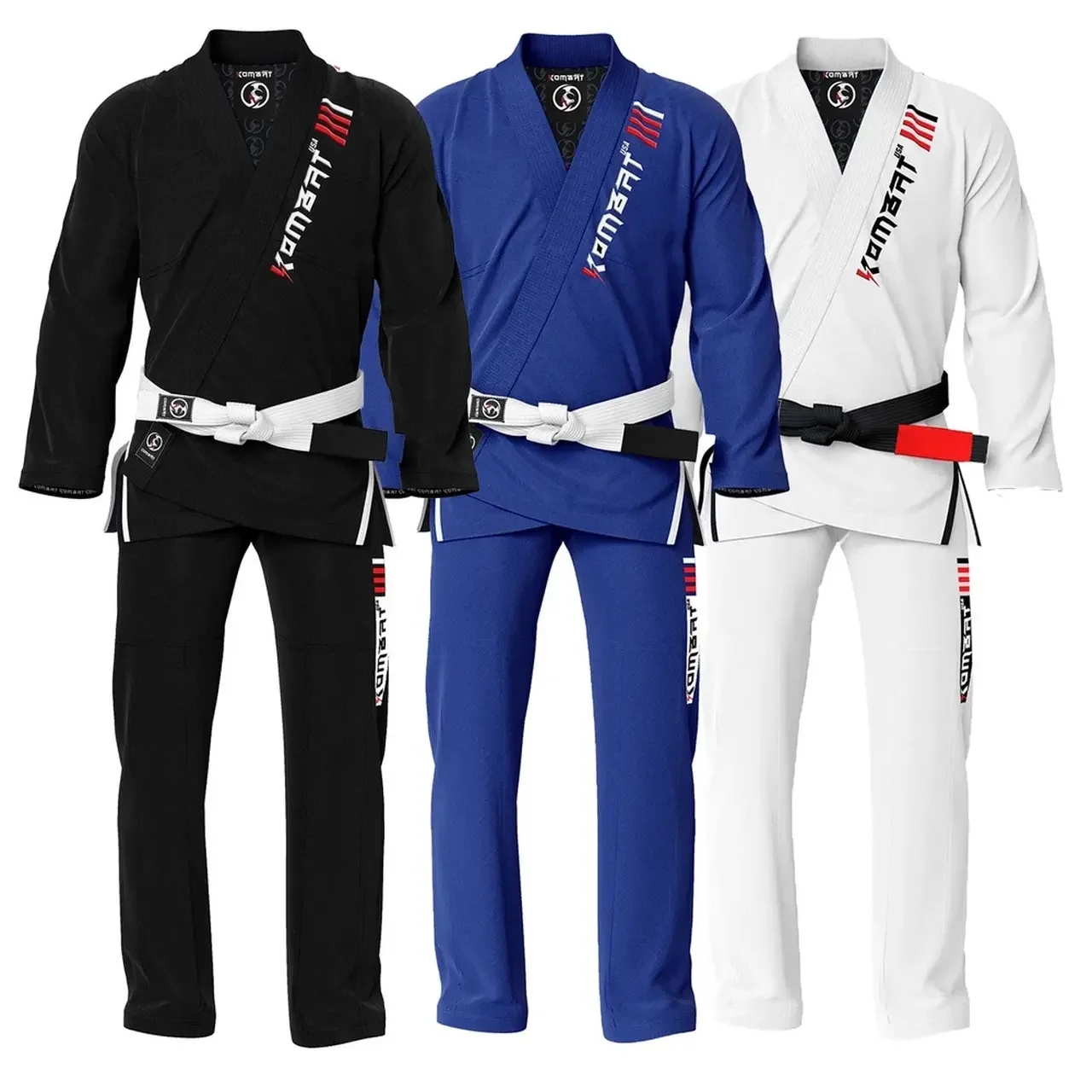Introduction to Jiu Jitsu Gi Construction
Jiu Jitsu, an art form deeply rooted in tradition and technique, places significant emphasis on the attire worn during practice and competition. Central to this is the Gi, a uniform that not only symbolizes the discipline but also serves as a crucial tool for practitioners. Understanding the construction of a Jiu Jitsu gis goes beyond mere aesthetics; it delves into the realms of functionality, durability, and performance.
Understanding the significance of a well-constructed Jiu Jitsu Gi
The Jiu Jitsu Gi is more than just clothing; it’s a partner in training, offering both protection and resistance. A well-constructed Gi can enhance mobility, endure rigorous training sessions, and provide a competitive edge.
Historical context and evolution of Gi construction
The origins of the Jiu Jitsu Gi trace back to traditional Japanese martial arts attire. Over centuries, it has evolved from simple cotton garments to sophisticated pieces engineered for modern combat sports.
Materials Used in Gi Construction
The choice of materials significantly influences the performance and durability of a Jiu Jitsu Gi.
Cotton: Traditional choice for durability and comfort
Cotton Gis are renowned for their durability, breathability, and comfort.
Synthetic blends: Modern innovations for performance enhancement
Blends of polyester, nylon, and other synthetic fibers are increasingly popular in Gi construction. These materials offer enhanced durability, moisture-wicking properties, and resistance to shrinking.
Weave patterns: Impact on strength and weight of the Gi
The weave pattern determines the strength and weight of the Gi. Common weaves include single weave, double weave, and gold weave, each offering a unique balance of strength and weight.
Importance of Stitching in Gi Construction
Stitching plays a crucial role in ensuring the structural integrity and longevity of a Jiu Jitsu Gi.
Reinforcement of stress points
Strategic stitching at stress points such as seams, cuffs, and collar ensures durability and prevents tearing during intense training sessions.
techniques like strengthened seams and double stitching
Double stitching and reinforced seams are common techniques employed to strengthen high-stress areas and prolong the lifespan of the Gi.
Role of stitching in overall durability and longevity
The quality of stitching directly impacts the durability and longevity of a Gi. High-quality stitching ensures that the Gi maintains its form and functionality over time.
Design Elements in Gi Construction
Beyond functionality, design elements play a significant role in the construction of a Jiu Jitsu Gi.
Embroidery and patches: Aesthetic customization
Embroidery and patches allow practitioners to personalize their Gis, adding flair and identity to their attire.
Fit and cut: Balancing comfort and functionality
The fit and cut of a Gi influence mobility and performance. A well-fitted Gi strikes a balance between comfort and functionality, allowing for unrestricted movement during training and competition.
Collar construction: Preventing grips and chokes
The collar construction of a Gi is designed to resist grips and chokes from opponents, offering a competitive advantage during sparring sessions.
Innovations and Technological Advances
Advancements in textile technology have led to several innovations in Jiu Jitsu Gi construction.
Pre-shrunk fabric: Minimizing shrinkage and maintaining fit
Pre-shrunk fabric undergoes a special treatment process to reduce shrinkage, ensuring that the Gi maintains its fit and form wash after wash.
Anti-microbial treatments: Fighting odor and bacterial growth
Anti-microbial treatments are applied to Gi fabric to combat odor-causing bacteria, keeping the Gi fresh and hygienic even after prolonged use.
Ripstop technology: Enhancing tear resistance without adding bulk
Ripstop technology reinforces the fabric with interwoven reinforcement threads, enhancing tear resistance without compromising the lightweight nature of the Gi.
Maintenance and Care Tips for Jiu Jitsu Gis
Proper maintenance and care are essential for prolonging the lifespan of a Jiu Jitsu Gi.
Washing and drying guidelines to maintain fabric integrity
Gentle washing with cold water and air drying are recommended to preserve the integrity of the fabric and prevent shrinkage.
Proper storage techniques to prevent mold and mildew
Storing the Gi in a dry, well-ventilated area prevents mold and mildew growth, prolonging its lifespan and freshness.
Patching and repairing minor damages to prolong Gi lifespan
Promptly patching and repairing minor damages such as loose threads and small tears can prevent further deterioration and extend the life of the Gi.
Choosing the Right Gi for Your Needs
Selecting the perfect Gi involves considering various factors to meet individual preferences and requirements.
Considering factors such as size, weight, and competition regulations
Factors such as size, weight, and adherence to competition regulations should be taken into account when choosing a Gi.
Budget considerations versus quality and performance
Balancing budget considerations with the quality and performance of the Gi is essential for making an informed purchasing decision.
Conclusion
The construction of a Jiu Jitsu Gi goes beyond mere stitching; it embodies the essence of the art form itself. By understanding the intricacies of Gi construction, practitioners can make informed choices that enhance their training experience and performance on the mat.
Unique FAQs
- Q: How often should I wash my Jiu Jitsu Gi?
- A: It’s recommended to wash your Gi after every training session to maintain hygiene and freshness.
- Q: Can I customize my Gi with patches and embroidery?
- A: Yes, many brands offer customization options to personalize your Gi with patches and embroidery.
- Q: What is the significance of pre-shrunk fabric in a Gi?
- A: Pre-shrunk fabric undergoes a special treatment process to minimize shrinkage, ensuring that the Gi maintains its fit and form wash after wash.
- Q: How can I prevent my Gi from developing a foul odor?
- A: Regular washing with cold water and air drying, along with anti-microbial treatments, can help prevent odor-causing bacteria from accumulating in your Gi.
- Q: Are synthetic blend Gis better than traditional cotton Gis?
- A: It depends on personal preference and specific training needs.
Read more : Click here








